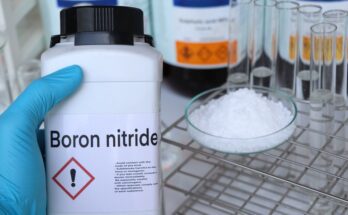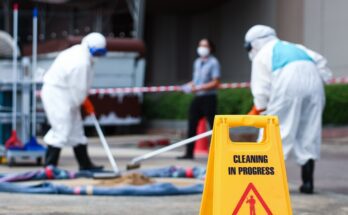When the pandemic began, medical workers knew very little about how to take care of patients — including who might have the greatest risk of getting seriously ill.
For other illnesses, healthcare workers are used to having information that helps determine which patients might need the most care and support. “We didn’t have any evidence, and that’s a scary place for anyone to be in,” says Nicholas Tatonetti, a biomedical informatics researcher at Columbia University. So, researchers around the world dove into the data hospitals were collecting on their COVID-19 patients to figure out what traits and qualities might predict how sick individuals became.
One of the earliest and easiest patient qualities to assess was blood type. And though there might be a slight correlation between some blood types and the likelihood of getting seriously ill or dying from COVID-19, the relationship isn’t strong enough to warrant prioritizing some patients over others based on what their blood test says. Nor should you be considering your blood type when evaluating your personal risk of dealing with the worst consequences of COVID-19. But this interesting tidbit about SARS-CoV-2 infection outcomes might help improve our understanding of the virus.
Comparing Blood Types
For the most part, studies assessing COVID-19 severity and blood type focus on A, B, AB or O blood classifications. These labels refer to the kinds of antigens — proteins that kick off an immune response — sitting on the surface of all the cells in someone’s body. While blood types are easy to measure and analyze, they have also been known to influence how people respond to other diseases. An O blood type, for example, was associated with a lower risk of contracting the original SARS virus, and those with the A blood type might be at a higher risk of Hepatitis C.
To see if similar correlations exist for SARS-CoV-2, research teams in China, Sweden, the U.S. and other places looked to see how patients with different blood type were coping. Michael Hultstrom, an intensive care doctor at Uppsala University in Sweden, and his team found that AB and A blood type came with a higher risk of death in their patients. In New York, Tatonetti and his team, who were also examining COVID-19 patients admitted to the hospital, found something slightly different. While those with AB blood type had a somewhat higher risk of dying from the virus, people with A blood type were at a slightly lower risk of needing tubes inserted into their airways.
Discrepancies aside, the differences found between blood types has so far been relatively small. For example, in the New York analysis, type A blood had about a 17.3 percent risk of intubation, while type O blood had about a 20.3 percent risk in patients already hospitalized with COVID-19. The difference in risk between each blood type for intubation, then, was 2.9 percent. For risk of death, type AB blood had a 1.4 percent higher risk than type O.
When it comes to changing behaviors based on what COVID-19 research suggests, actions like social distancing and wearing masks have substantial amounts of evidence for how they can reduce COVID-19 infections, Tatonetti says. Blood type differences, on the other hand, are not large enough to change patient care, or mark particular people as more vulnerable to the disease.
Other Explanations
It’s possible some of the differences research has found between blood types might be due more to the socioeconomic status of the patients. Depending on someone’s ancestry, they might be more likely to have one blood type over another. For example, one study looking at blood bank donors across the U.S. found that while only 12 percent of the individuals had B type blood, over 25 percent of Asian participants had that blood type. And while 37 percent of all donors had A type blood, this variety was present in just under 26 percent of Black donors. These numbers, however, are based on what identity group people think they belong to — categories that are only rough proxies for someone’s genetic ancestry.
With this this in mind, we also know that in countries like the U.S., people with Latino or African ancestry were hit disproportionately hard by COVID-19, likely due to increased exposure for that demographic and issues of racial disparity in medical care received. So, what appears to be differences in outcome due to blood type might actually be based on these other factors.
Read More: Why People of Color Are Disproportionately Hit by COVID-19
To determine whether or not this is the case, researchers would need to study a much larger sample of patients and link their blood type to a DNA analysis of their ancestry, Tatonetti says. What people report as their heritage doesn’t always line up perfectly with what their DNA says.
There’s also a chance that patterns that seem to link COVID-19 risk with certain blood types are related to more complex biological processes. “It’s possible that it’s acting in ways we don’t fully understand, beyond just blood type,” says Michael Zietz, who co-authored the New York City analysis with Tatonetti. Blood type, for example, is determined by a single gene — but that same stretch of DNA can shape other biological features. That means blood type in and of itself may not be influencing differences in COVID-19 outcomes. Instead, the responsible agent could be another bodily difference that goes hand-in-hand with a given A, B, AB or O classification.
Whatever might explain how blood type might be connected to COVID-19, researchers haven’t pinpointed it. Maybe the surface proteins of certain blood types bind SARS-CoV-2 more effectively, a theory Hultstrom and others have proposed. Or, since some with COVID-19 develop blood clots — which people with blood types besides O are more prone to getting — maybe that’s influencing infection results, too.
Finding the COVID-10 severity correlation to blood type is like illuminating the clue sitting next to the real solution. “The lamp light is looking a little in the wrong direction,” Tatonetti says. That just means researchers may need to recast their search.


